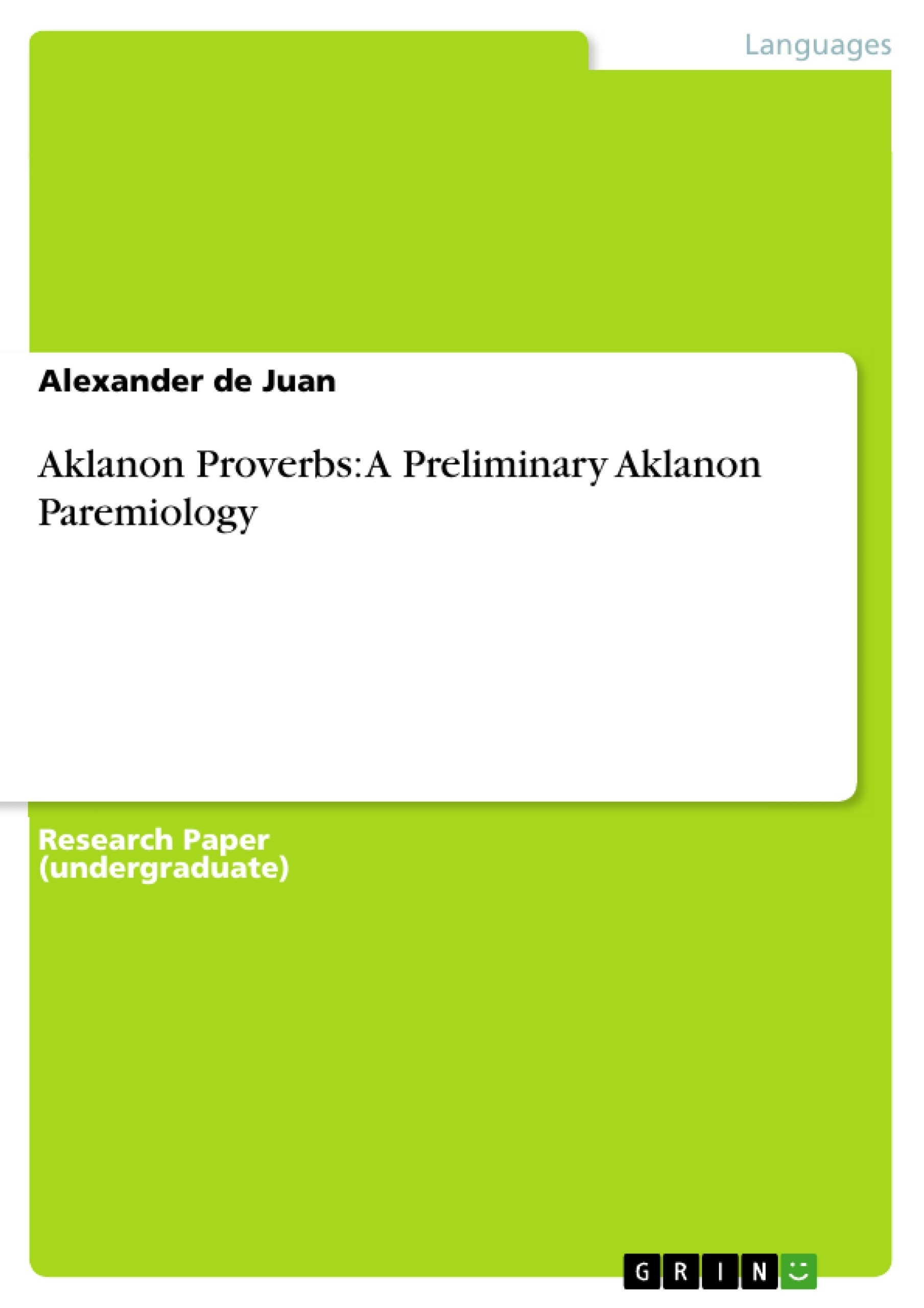This study evaluates the "hueobaton" or proverbs in Aklanon language, one of the languages in Panay Island, Philippines. There are 298 Aklanon proverbs gathered from field and library research. These proverbs are classified according to themes and subject matter, and then analyzed for contextual meaning by highlighting the embedded motifs, symbols and cultural concepts. By providing a collection of Aklanon proverbs, or an Aklanon paremiography, this research serves as a preliminary study so future researches may be done towards a comprehensive Aklanon paremiology.
Table of Contents
- CHAPTER I
- INTRODUCTION
- Background of the Study
- Statement of the Problem
- Conceptual Framework
- Significance of the Study
- Scope and Limitation of the Study
- Definiton of Terms
- CHAPTER II
- REVIEW OF RELATED LITERATURE
Objectives and Key Themes
This research paper focuses on collecting and analyzing Aklanon proverbs, aiming to contribute to the preservation and promotion of Aklanon literature. The study seeks to classify these proverbs according to themes and subject matter, and analyze their contextual meaning by identifying embedded motifs, symbols, and cultural concepts. The key themes of the research include:- Preservation and promotion of Aklanon literature
- Cultural significance of proverbs
- Analysis of Aklanon proverbs in relation to themes, subject matter, motifs, symbols, and cultural concepts
- Potential use of Aklanon proverbs in education
- Comparison of Aklanon proverb scholarship with international paremiology
Chapter Summaries
Chapter I: Introduction
This chapter introduces the research project, focusing on the background, statement of the problem, conceptual framework, significance, scope, and limitations of the study. It highlights the importance of collecting and preserving Aklanon proverbs, underscoring their value as a source of cultural knowledge and their potential for use in education. The chapter also reviews existing international scholarship on paremiology, referencing prominent figures like Wolfgang Mieder and Archer Taylor.Chapter II: Review of Related Literature
This chapter delves into existing literature related to Aklanon proverbs and paremiology. It examines the works of Dr. Beato A. de la Cruz and Damiana L. Eugenio, who have both compiled collections of Aklanon proverbs, as well as numerous international proverb studies. The chapter emphasizes the importance of previous research in informing the analysis of Aklanon proverbs within this study.Keywords
This research centers on the study of Aklanon proverbs, focusing on their collection, classification, analysis, and cultural significance. Key terms include: Aklanon proverbs, paremiology, paremiography, themes, motifs, symbols, cultural concepts, Aklanon language, Inakeanon, and the preservation and promotion of Aklanon literature.
Fin de l'extrait de 64 pages
- haut de page
- Citation du texte
- Alexander de Juan (Auteur), 2013, Aklanon Proverbs: A Preliminary Aklanon Paremiology, Munich, GRIN Verlag, https://www.grin.com/document/214006
Lire l'ebook



